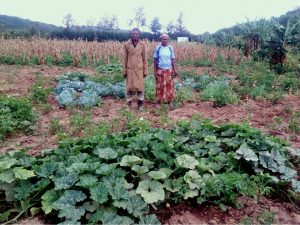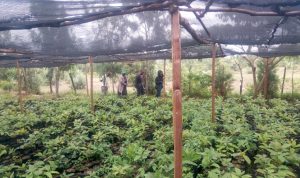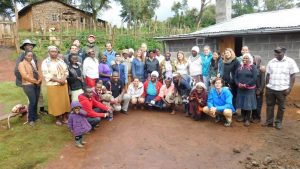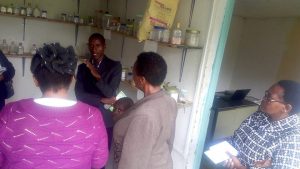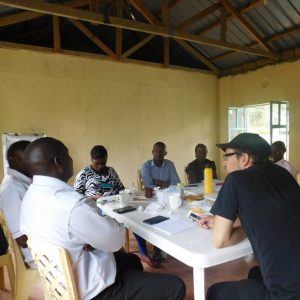In our work to conserve agro-biodiversity we empower farmers to save planting materials for crops that are rarely bred commercially. In our previous newsletter we highlighted on planting material production for pumpkins. In this issue we will be discussing planting material production for sweet potatoes.
Sweet potato is equally a very important staple crop in Kenya. It is grown and consumed extensively as a root crop, the leaves as a vegetable sauce. Both roots and leaves are sold in the market. The plant is a herbaceous perennial vine, bearing alternate heart-shaped or palmate-lobed leaves and medium-sized sympetalous flowers. The edible tuberous root is long and tapered, with a smooth skin whose color ranges between yellow, orange, red, brown, purple, and beige. Its flesh ranges from beige through white, red, pink, violet, yellow, orange, and purple. Sweet potato varieties with white or pale yellow flesh are less sweet and moist than those with red, pink or orange flesh. The sweet potato is a warm-season, spreading vegetable of tropical origin. It is a good choice for a garden because it is easy to grow, is drought- / heat-tolerant, and has few pests or diseases. The sweet potato is also very nutritious and low in calories.
Utilization
Major uses of sweet potato:
- Consumption of fresh roots or leaves (vines)
- Animal feed
- Flour
- Snack
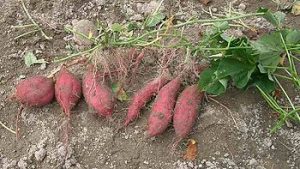
There are three classes; breeder, basic and certified.
Classes of seed/planting material
Classes of planting materials are:
1 Breeder seed: Breeder seed is the variety released and maintained by the breeder.
2 Basic/foundation seed:
This is the progeny of breeder seed. Its production is normally under the control of mandated institutions under the direct supervision of a national certification agency.
Planting sweet potatoes using Vines
Good quality vines should be planted and is achieved using the following guidelines:
Select vines that are healthy, vigorous and lush growth. Tender and medium (semi-mature) parts for planting.
Cuttings from bases of vines carry the sweet potato worm (SPW) and the sweet potato stem borer.
Avoid plants with pests and diseases especially the SPW and the SPVD. Many sweet potato pests and diseases are stem=borne and spread through distribution and planting of infested or diseased cuttings.
Vines for planting should come from actively growing and disease-free plants.
The vines should be shoot tip cuttings since the meristematic cells are still actively dividing.
2-3 node cuttings are recommended.
